NIPS 2012 Conference in Lake Tahoe, NV

An amazing 1,600 computer scientists and engineers descended to Lake Tahoe, NV (that’s 200 more than last year, and represents an all-time high for the Neural Information Processing Systems conference). After many years in Vancouver/Whistler - Granada (Spain) last year - the conference now finds its new home in beautiful Lake Tahoe, NV.
Wednesday 5 December 2012

The first day (Monday, Dec. 3rd) was entirely devoted to tutorials. I decided to first attend the session by Prof. Dr. Paul Fearnhead (Lancaster University, see picture below) on “Exact Approximate Learning”.

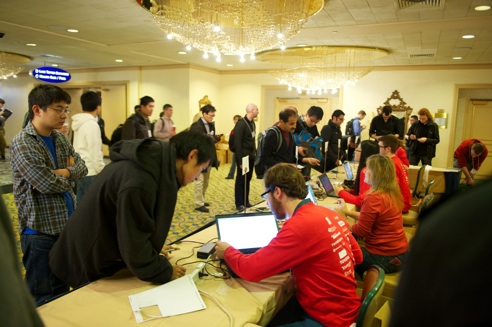
Below, a picture is shown of the two casino hotels where the NIPS 2012 conference took place (Harrah’s and Harveys).
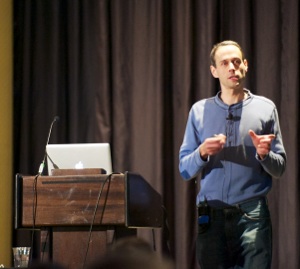



During the afternoon, I attended a great tutorial by James C. Spall (Johns Hopkins University, see picture below) titled “Stochastic Search and Optimization”.

James C. Spall devoted a substantial amount of time to his Simultaneous Perturbation Stochastic Approximation (SPSA) method.

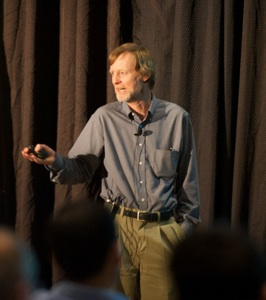




In the evening the first poster session took place combined with a walking dinner.


Tuesday started off with an invited talk by Scott Aaronson (MIT, see picture below) titled “Quantum information and the Brain”.

He also discussed which tasks quantum computers are particularly good at (see slide below).
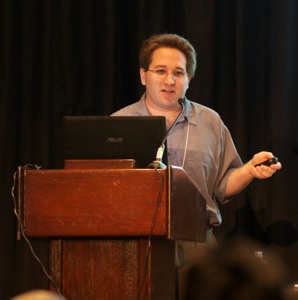

Next, the paper titled “TCA: High Dimensional Principal Component Analysis for non-Gaussian Data” was presented (see pictures below). This could be particularly relevant in applications such as stock market returns data.

Next, a set of five short “spotlight” sessions were held. These are teasers for the audience to come and visit the authors during their poster session. I particularly like this framework, because it allows you to listen to many messages, without being bored by the ones that are of lesser interest to you. Below you find a visual impression of some of these short talks.
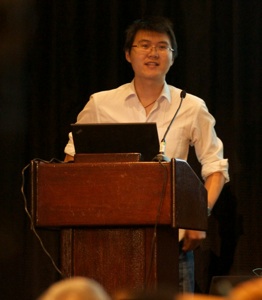

In the afternoon, I particularly liked Stéphane Mallat (Ecole Normale Supérieure, see pictures below)’s invited talk titled “Classification with Deep Invariant Scattering Networks”.
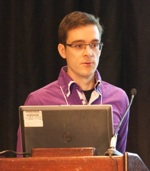
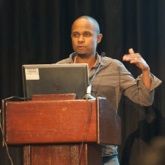
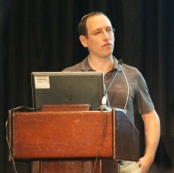
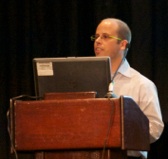
Next, the paper “A Stochastic Gradient Method with an Exponential Convergence Rate with Finite Training Sets” (N. Le Roux, M. Schmidt, F. Bach, see pictures below) was presented.
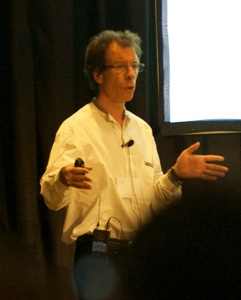
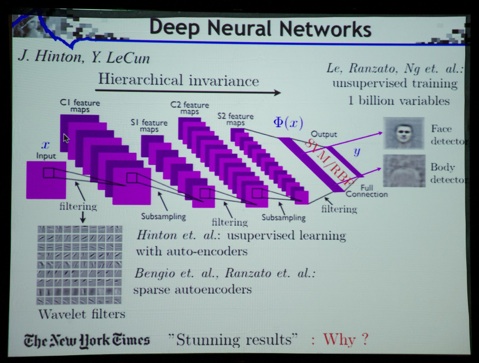
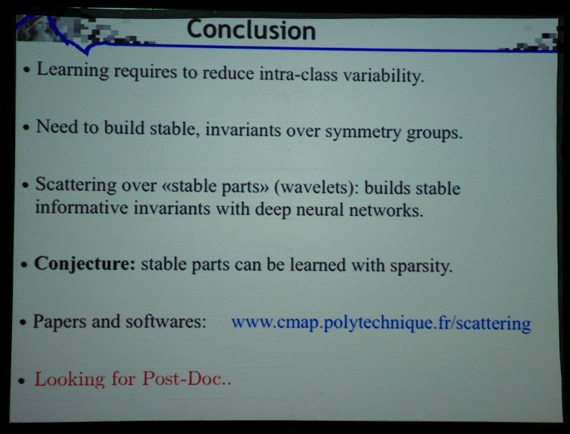
Throughout the conference, a number of exhibitors were present in the coffee break rooms. These included publishers (see picture of Springer booth below), large corporations (e.g. the Amazon, Google, EMC2 Greenplum, Microsoft Research booths), startups (e.g. SkyTree for Big Data Analytics), and hedge funds (e.g. Winton). In sum, it was an excellent place for informal contacts, and for master/PhD students to get hired...
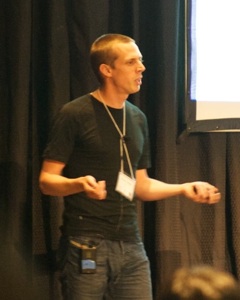
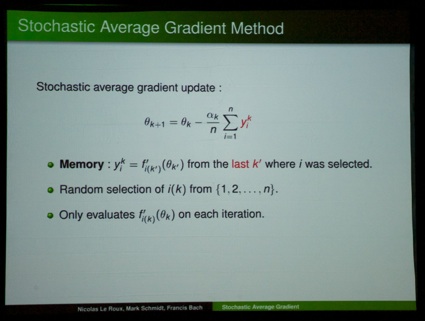
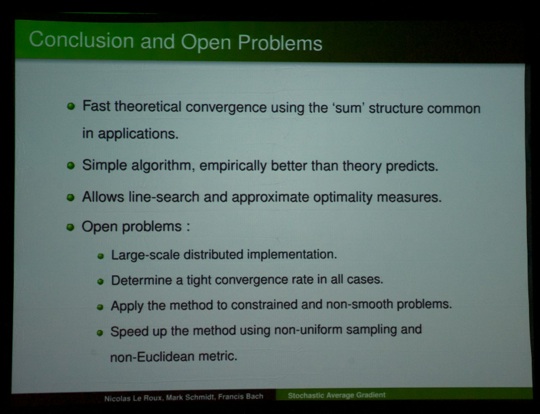
Stressed-out participants could even turn to casino staff for some relaxing massages...






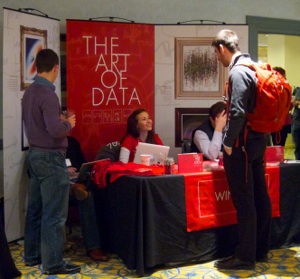

That night, another poster session was held. Some interesting ones included (see pictures below):
The organizers also put up a job offerings board... see picture below.


On Wednesday morning, Thomas Dietterich (Oregon State University, see picture below) gave a keynote talk on an application of the KDD process to ecosystems.

Next, Ashwini Shukla (LASA, see picture below) talked about “Augmented-SVM: Automatic space partitioning for combining multiple non-linear dynamics”.

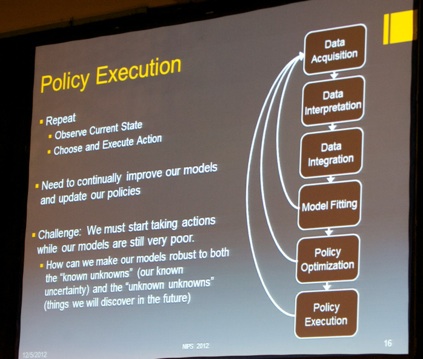
Next, it was time for another spotlight session:
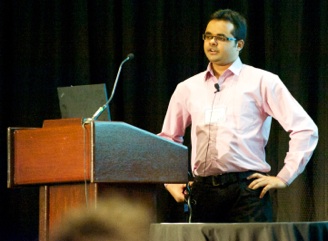
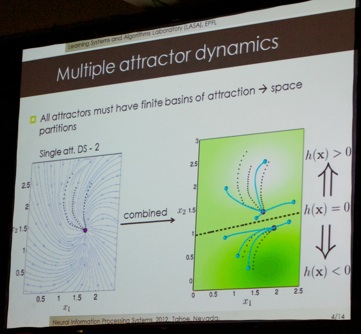
Next, I attended the session on Markov Decision Processes. The first talk was titled “On the Use of Non-Stationary Policies for Stationary Infinite-Horizon Markov Decision Processes” (B. Scherrer, B. Lesner). See pictures below.
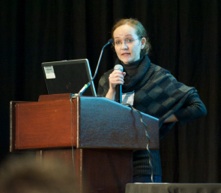


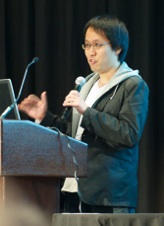
Next, the presentation titled “A Unifying Perspective of Parametric Policy Search Methods for Markov Decision Processes” (T. Furmston, D. Barber).
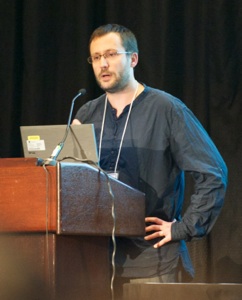
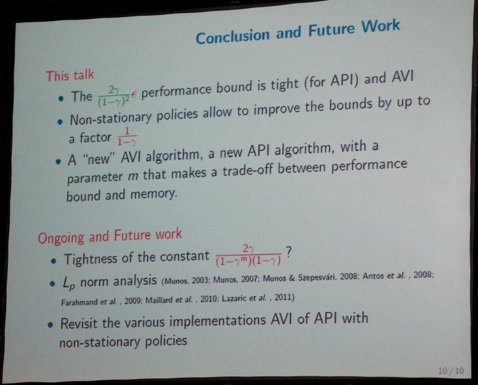
In the afternoon, Stanislas Dehaene gave an invited talk on “Signatures of Conscious Processing in the Human Brain”.
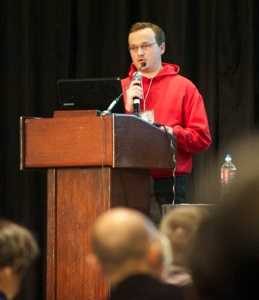
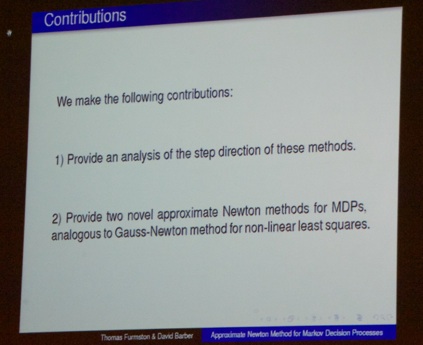
During the conference, yours truly (@dirkvandenpoel) also attended a tweetup. Many tweeps (@michaelhoffman, @oseledetsivan, @nsaphra, @erg @pinguar, @memming, @tverven, @neiloxtoby, @stephenswanson, @rojabandari, @rateldajer, @jesolem, and some others) showed up to exchange ideas on subject matter as well as about tweeting... a really nice group.
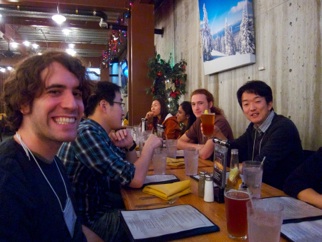
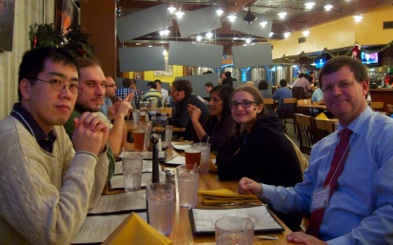
In the evening, we had another poster session.

The evening session also included some demonstrations. Ghent University showed the capabilities of using machine learning to improve the process of using EEG patterns as a replacement for typing characters on a keyboard (Pieter-Jan Kindermans: see picture below, Hannes Verschore, David Verstraeten, Benjamin Schrauwen)
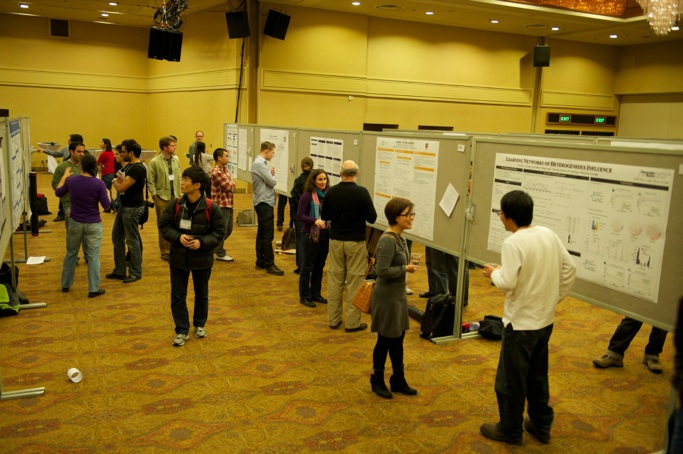
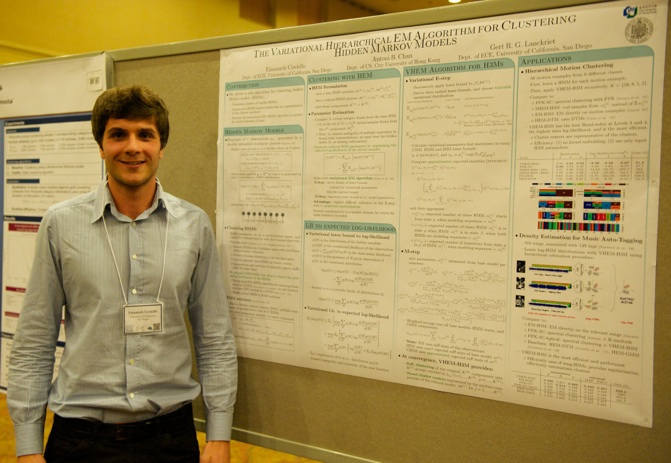
Thursday morning the sessions opened with a talk by the current president of the NIPS Foundation: Terrence Sejnowski (Salk Institute, see picture below). He mainly talked about the link to biological sensors (the visual cortex). He mentioned a new type of camera (Neuromorphic camera, see pictures below).
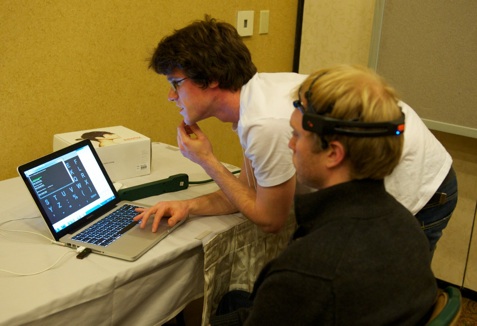
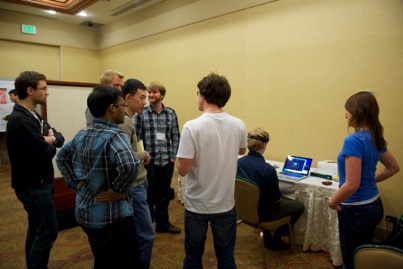
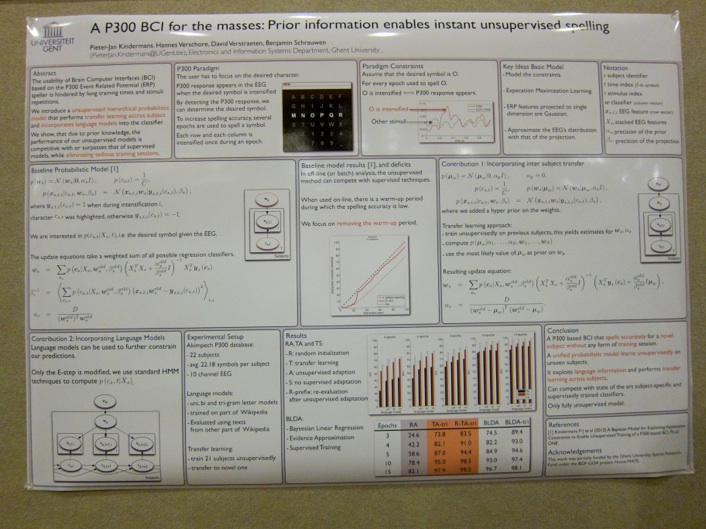
Next, Angela J. Yu (UCSD, see picture below) presented the talk titled “Strategic Impatience in Go/NoGo versus Forced-Choice”.
Decision-Making
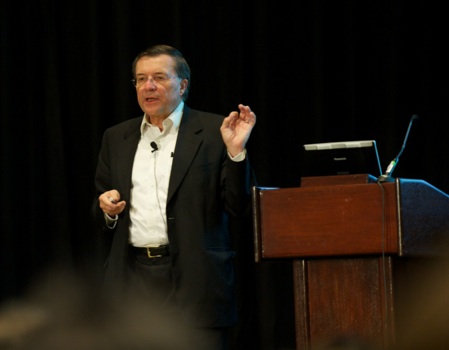
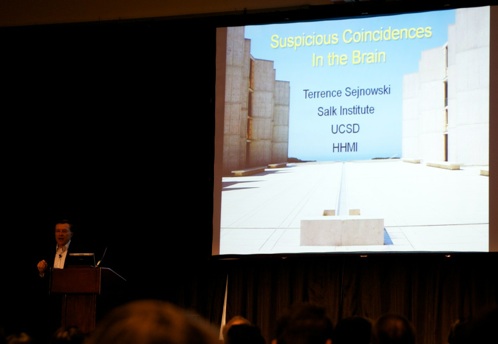
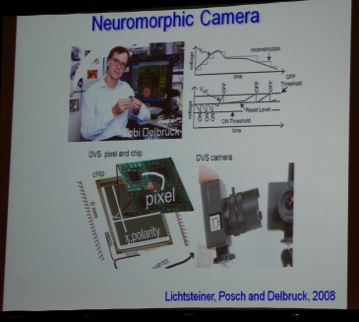
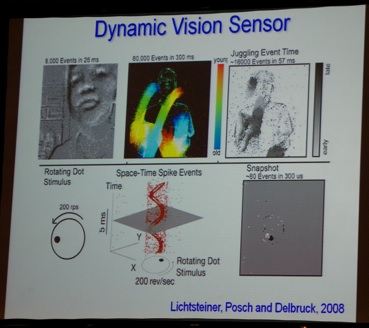
This session was followed by another spotlight session.
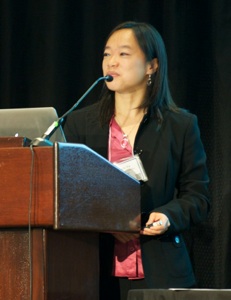
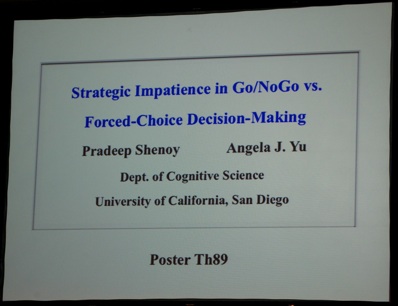
A pdf of the conference book can be found here.
Next, Geoffrey Hinton (see picture below) took the stage (he was a replacement for a person who could not make it to the conference). He gave a very interesting talk, my personal favorite of the entire conference. For a long time neural networks have been outperformed by ensemble methods (mostly of decision trees, e.g. random forests). He explained a new approach to use for neural networks to match of even outperform ensemble methods: Dropout.
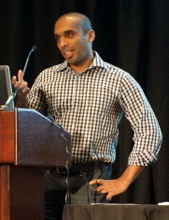
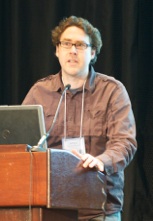
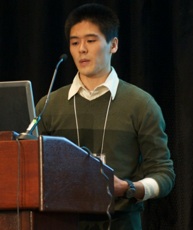
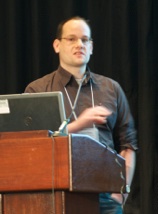
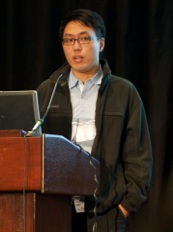
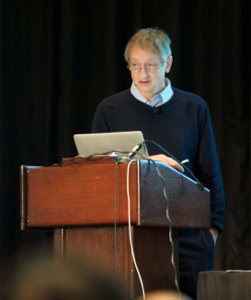

Next, his colleague, George Dahl, took over and talked about applying the dropout method to the Merck Molecular Activity Challenge.



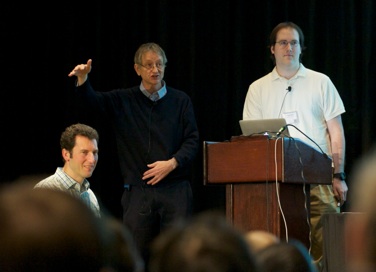
Next, it was time for the presentation titled “Gradient Weights help Nonparametric Regressors” (S. Kpotufe, A. Boularias).
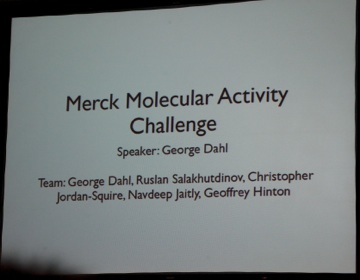

Then, some more short spotlight sessions were held.
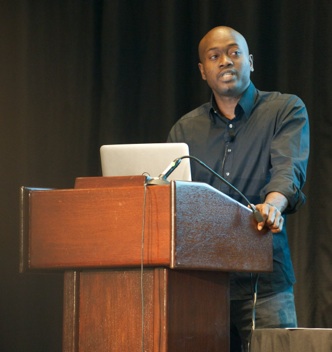
Then, it was time for the final poster session.
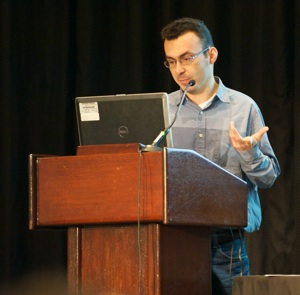
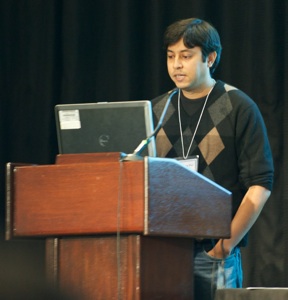
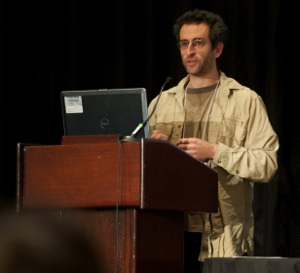
Another great edition of NIPS came to a close... a record number of attendees combined with great talks and content. Congratulations to the organizers!


